Screen Monitoring Software
Advanced screen monitoring system featuring desktop screenshots and videos
Try for Free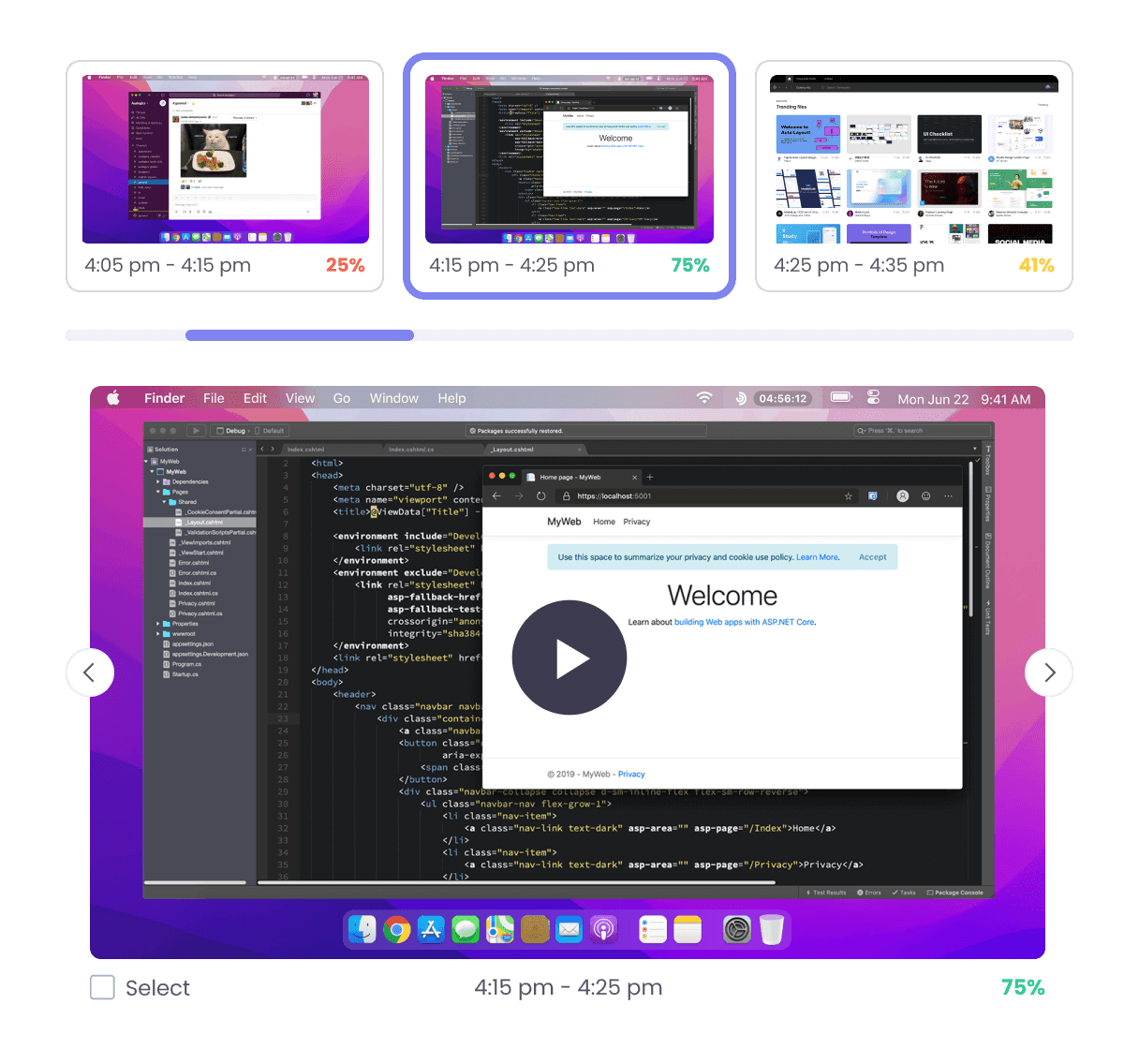
Randomized Screenshot Capture
Every 10 minutes, Traqq takes a snapshot of the employee's screen. This feature ensures real-time monitoring of activities without being too intrusive. These screenshots are then securely uploaded and stored in an online account, ensuring both accessibility and data protection.
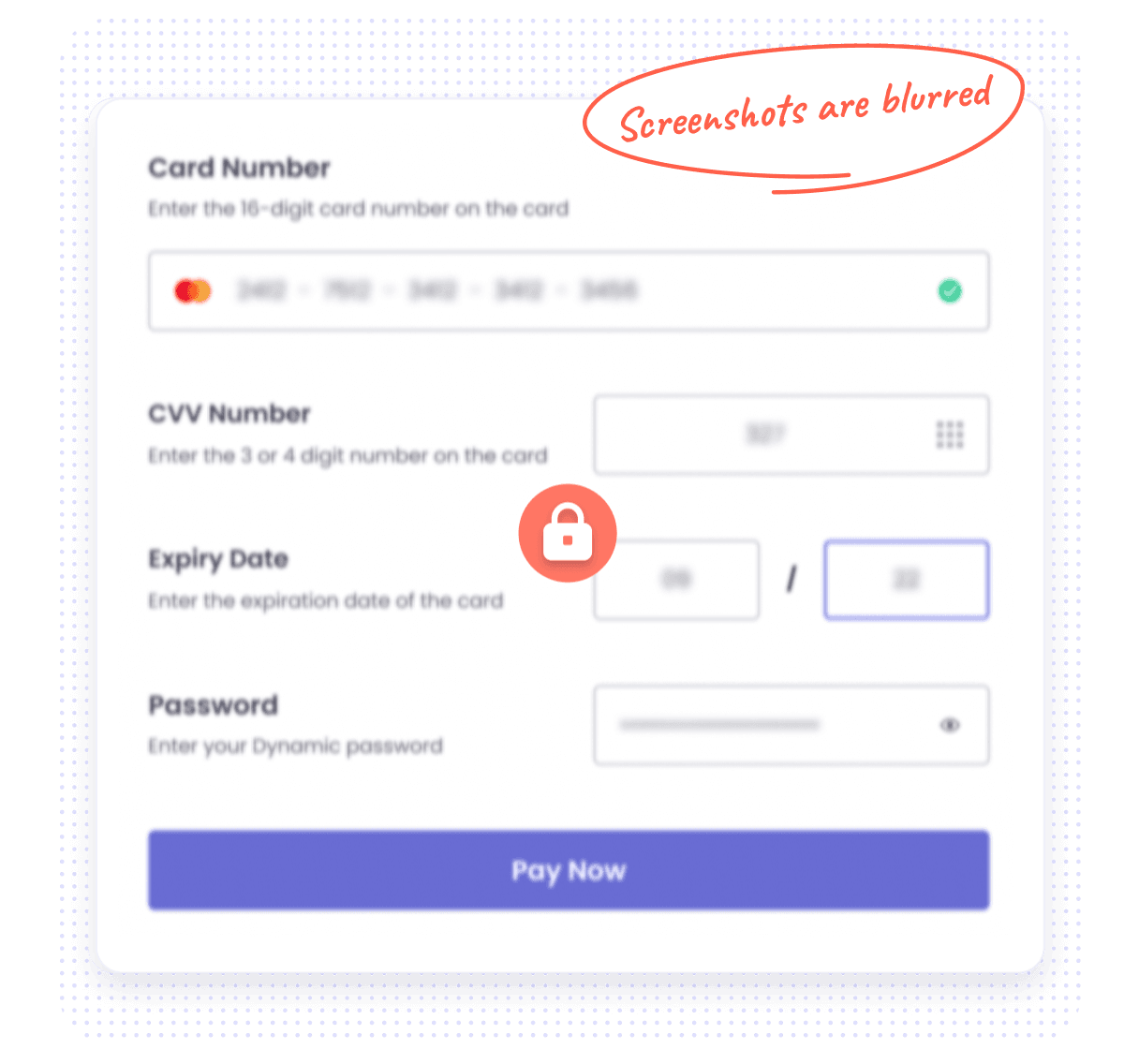
Blurred Screenshot Review
Upon accessing the online account, administrators or managers can review the captured screenshots. To protect sensitive information and maintain a degree of privacy, the screenshots are blurred. This allows for a general understanding of the task being performed without revealing specific details.
If, upon review, any screenshot is considered unnecessary or irrelevant, it can be selectively deleted from the account by the employee.
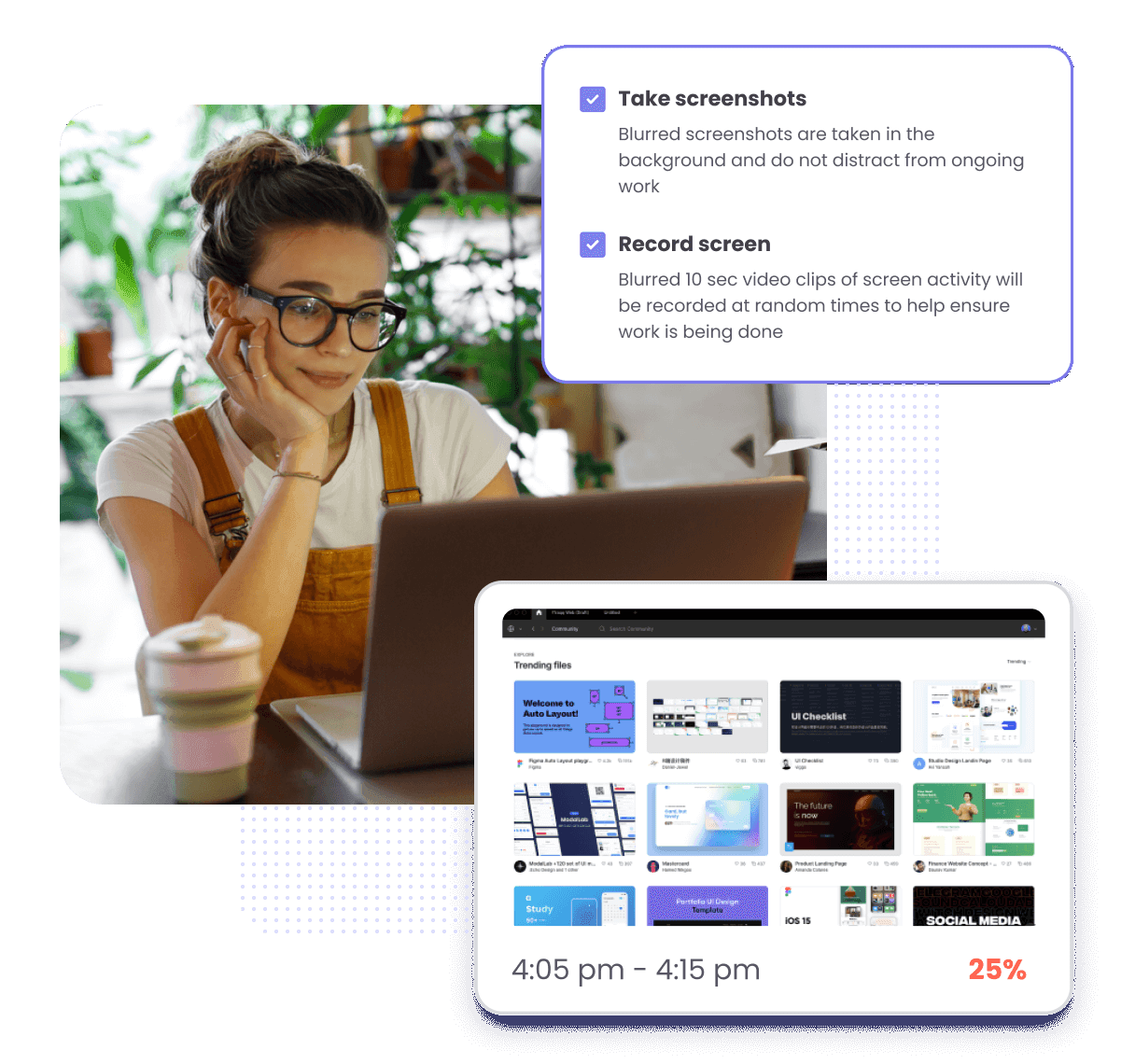
Team-Level Screen Recording Activation
Traqq’s screen recording feature is a powerful tool designed for comprehensive oversight of the entire team. Once activated by Managers, Admins, or Owners, the employee monitoring tool kicks into action, capturing 10-second video clips that showcase real-time screen activity.
These recordings aren't continuous; they occur at unpredictable intervals to offer a representative sample of work without being overly invasive.
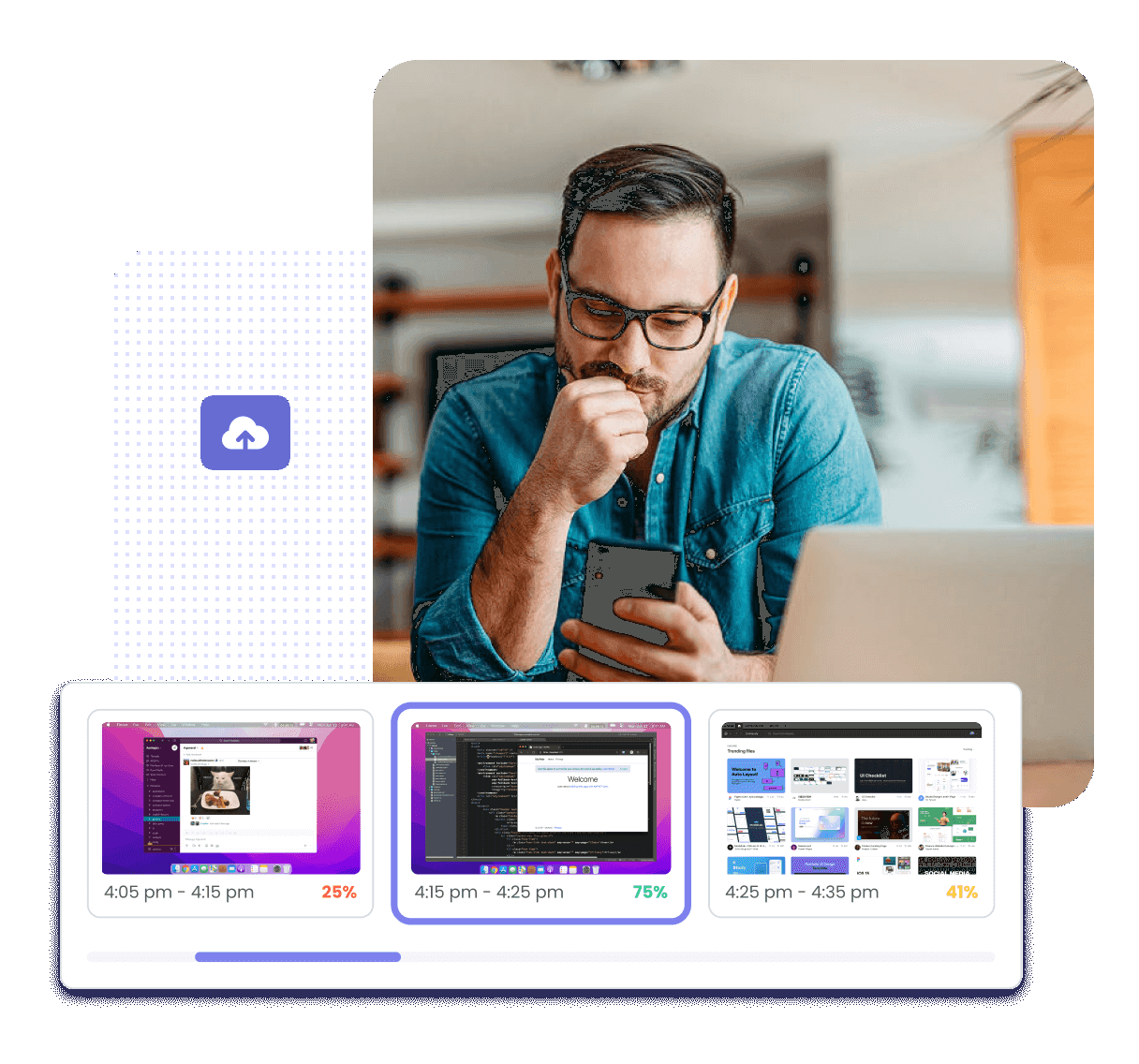
Online Storage
Every video clip that's captured is automatically uploaded and stored in the respective employee's online account. This centralized storage system ensures easy accessibility for review purposes. Managers or authorized personnel can access these videos to assess work patterns, productivity, or for any other evaluative purpose.
If any video clip is deemed unnecessary or if it captures non-work-related activity, it can be easily deleted from the online account. Note that only the employee themselves may delete screen recordings or screenshots from their online Traqq timeline.
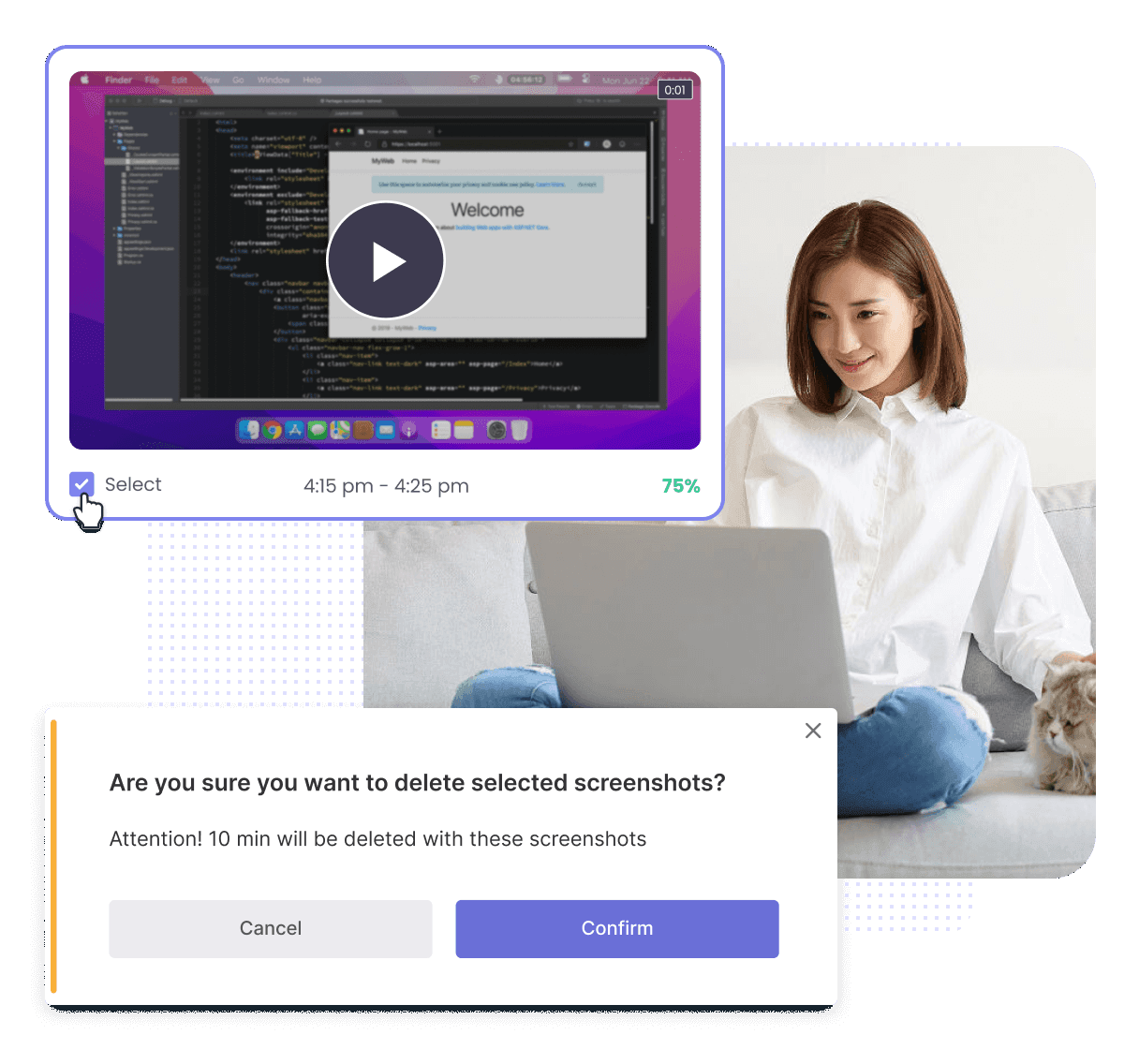
Implications for Screenshots and Video Deletion
Each recorded screenshot or video clip corresponds to a related 10-minute segment of work time. Once deleted, the software interprets the segment as non-billable or non-work time. This ensures that only verifiable work time is considered for billing or productivity assessment.
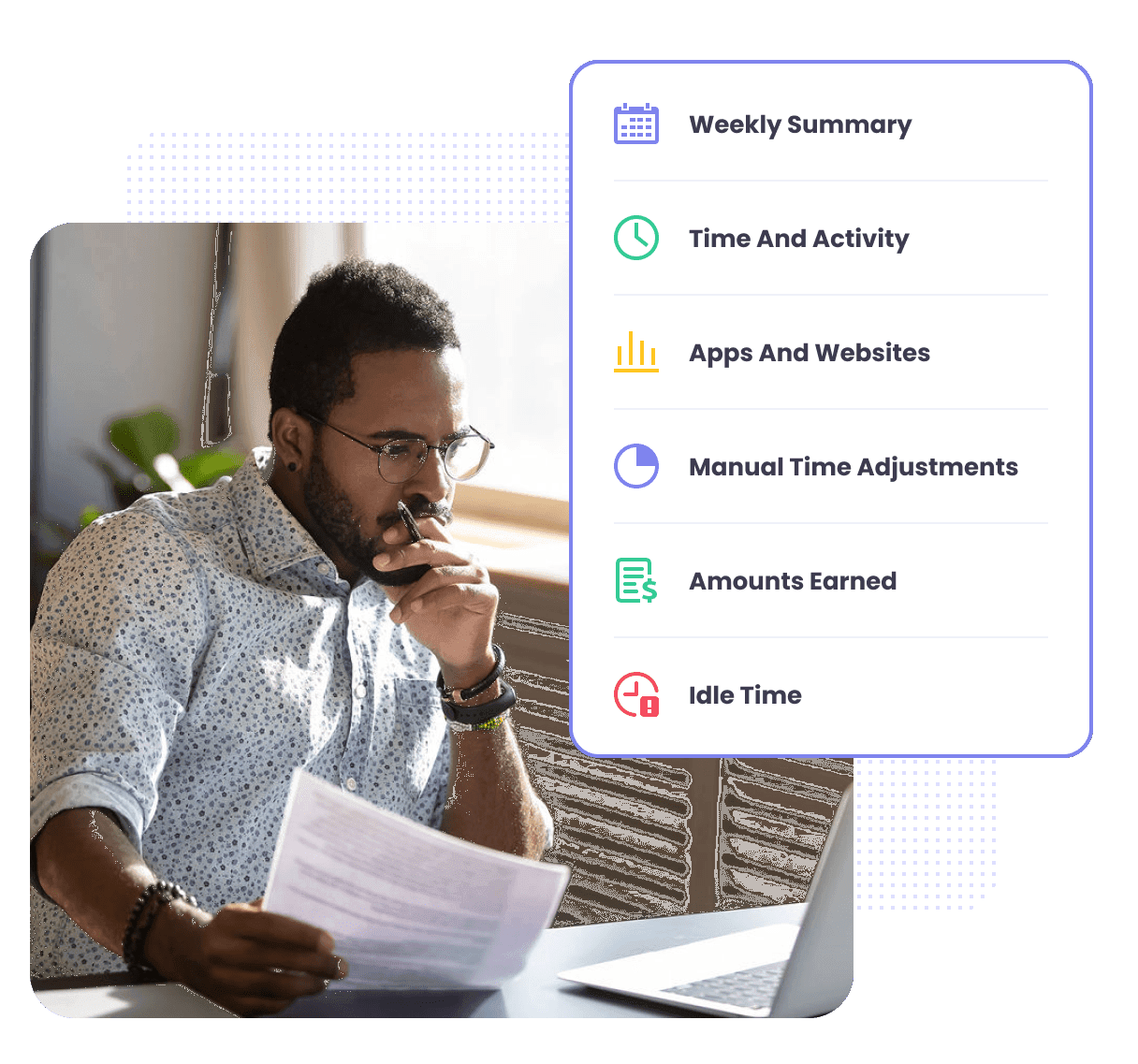
Convenient Data Representation
Traqq summarizes the data collected from screen monitoring and combines it with other user activity information, presenting it in a user-friendly format.
Other Features of Traqq
Time Tracking
Online and offline time tracking allows you to see how time is spent. Smart alerts & notifications will keep you tuned in to ensure you record every billable minute.
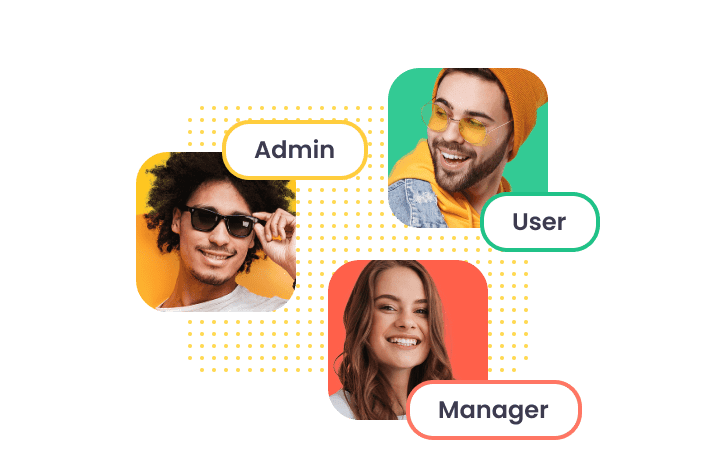
Team Management
Manage everyone on your team by dividing people into groups. Create as many groups as you need, give them custom names and add users to groups.
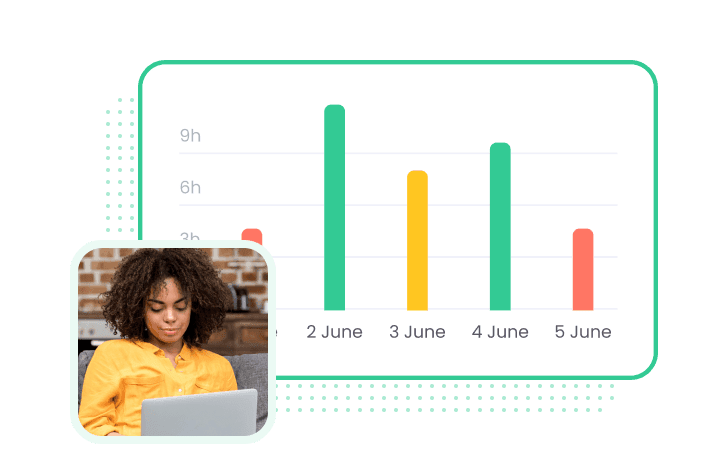
Team Analysis and Reporting
Detailed productivity statistics and accurate online timesheets allow you to measure and analyze the performance of everyone on your team.
Screen Monitoring Complete Guide
Today, remote work has become the new norm. So have the associated benefits and challenges.
While flexibility is definitely a plus, companies face unique challenges in maintaining productivity and ensuring efficiency. That’s when many employers turn to screen monitoring software.
While flexibility is definitely a plus, companies face unique challenges in maintaining productivity and ensuring efficiency. That’s when many employers turn to screen monitoring software.
If you are an employer that appreciates flexibility, it might be a good idea to consider this digital toolkit that can give you peace of mind and even improve your company’s performance and revenue.
With a significant portion of the workforce operating from diverse locations, it's essential to know that company time and resources are being utilized effectively. No employer wants to see their investment in human capital go to waste due to lost productivity. Screen monitoring offers a transparent window into how time is being spent, ensuring that tasks align with company goals.
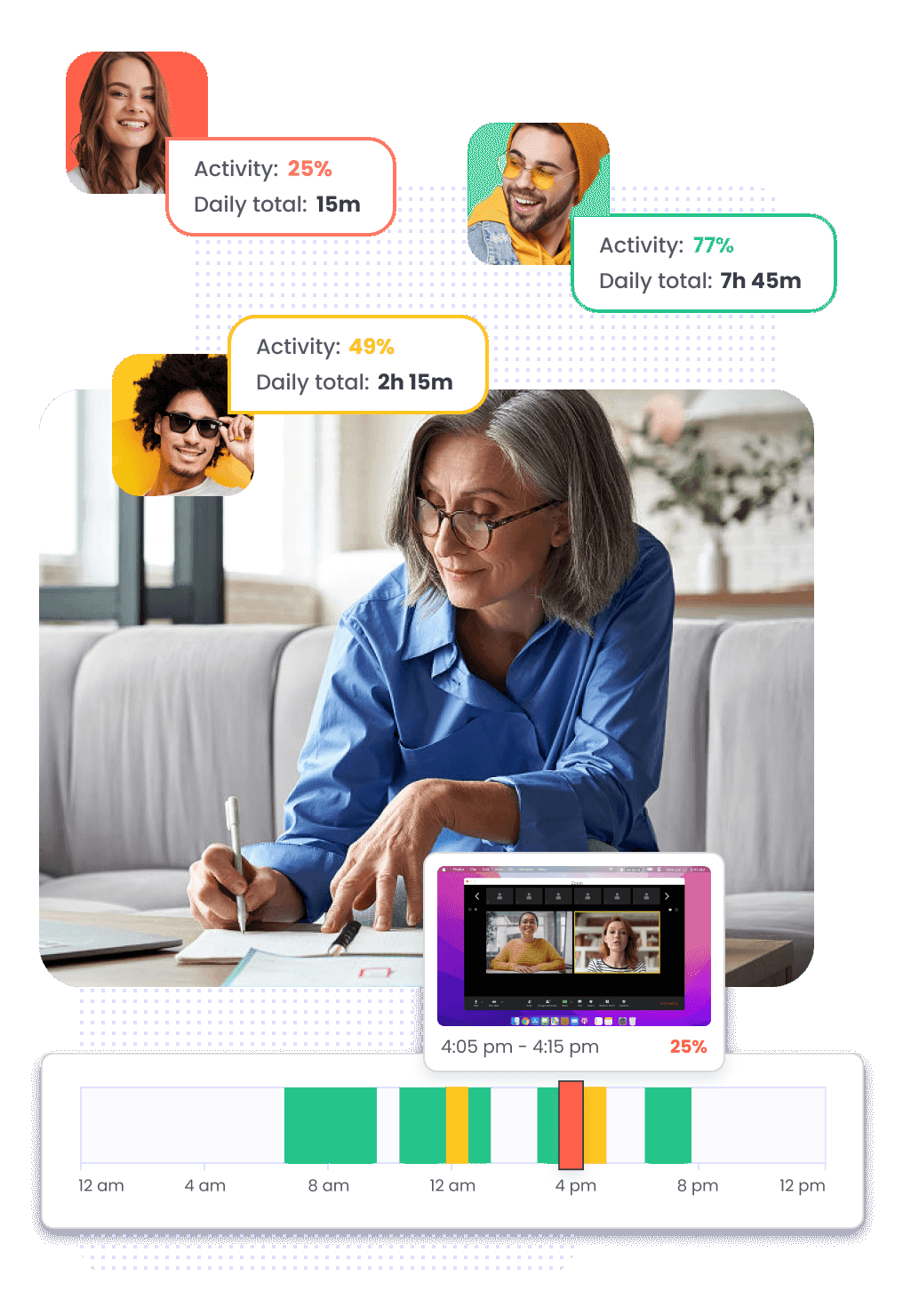
What Is Screen Monitoring Software?
Screen monitoring software is a digital tool that offers employers the capability to view and record activity on an employee's computer screen in real-time.
Once this software is in place, every login is documented with the user’s name and timestamp. This enables employers to review their staff’s:
activity levels;
most-used applications;
website visits.
Interestingly, recent data suggests that nearly 80% of major US companies use such tools, primarily to oversee emails, internet usage, and even social media activity.
A significant advantage is the software's remote access capability. Managers or supervisors can seamlessly monitor screens, regardless of where they or their employees are.
Alerts and notifications are another crucial aspect, especially from a security standpoint.
The software can be configured to send out alerts for specific triggers, such as when an employee accesses restricted sites or when there's an indication of potential data breaches. This proactive approach ensures that any potential risks are flagged in real-time, allowing for swift preventive action.
Additionally, employee monitoring software is capable of periodically capturing screenshots or short video clips, creating a visual log of what's happening. One of its standout functionalities is the ability to accurately log the websites and applications an employee accesses.

What Does Screen Monitoring Software Do?
In today's digital age, the capabilities of employee monitoring software have evolved significantly, offering employers a comprehensive view of their employees' activities. Most advanced monitoring tools on the market now enable users to have real-time insights into virtually everything happening on an employee's desktop. This list is quite extensive and includes:
Screen Recording
This feature captures real-time videos or periodic screenshots of an employee's screen, providing a visual representation of their activities throughout the day. By having access to this visual record, employers can review work processes, ensure tasks are completed accurately, and offer constructive feedback.
Login/Logout Tracking
This feature allows to document the exact moments employees start and finish their work, automating the presence monitoring and work-hour tracking. It not only provides an accurate record for payroll purposes but also ensures employees adhere to their work schedules and helps employers assess time management skills.
Application Monitoring
This feature keeps track of all applications accessed by employees during their work hours. By monitoring application usage, employers can determine which tools are essential for tasks, spot any unauthorized application usage, and allocate resources more effectively.
Website Browsing Monitoring
This component offers detailed insights into the websites an employee browses, how long they stay there, and how often they revisit. Such monitoring can reveal unproductive browsing patterns and ensures the appropriate use of company resources. Employers also have the option to restrict access to certain distracting or inappropriate websites.
Remote Access in Screen Monitoring
Many screen monitoring tools have a remote access feature, enabling managers to oversee employee screens from virtually anywhere. This feature is particularly beneficial for managers who themselves operate from remote locations or oversee teams spread across different regions. By having this remote access option, managers can ensure consistent productivity levels and maintain alignment with company objectives, regardless of their employees’ geographical locations.
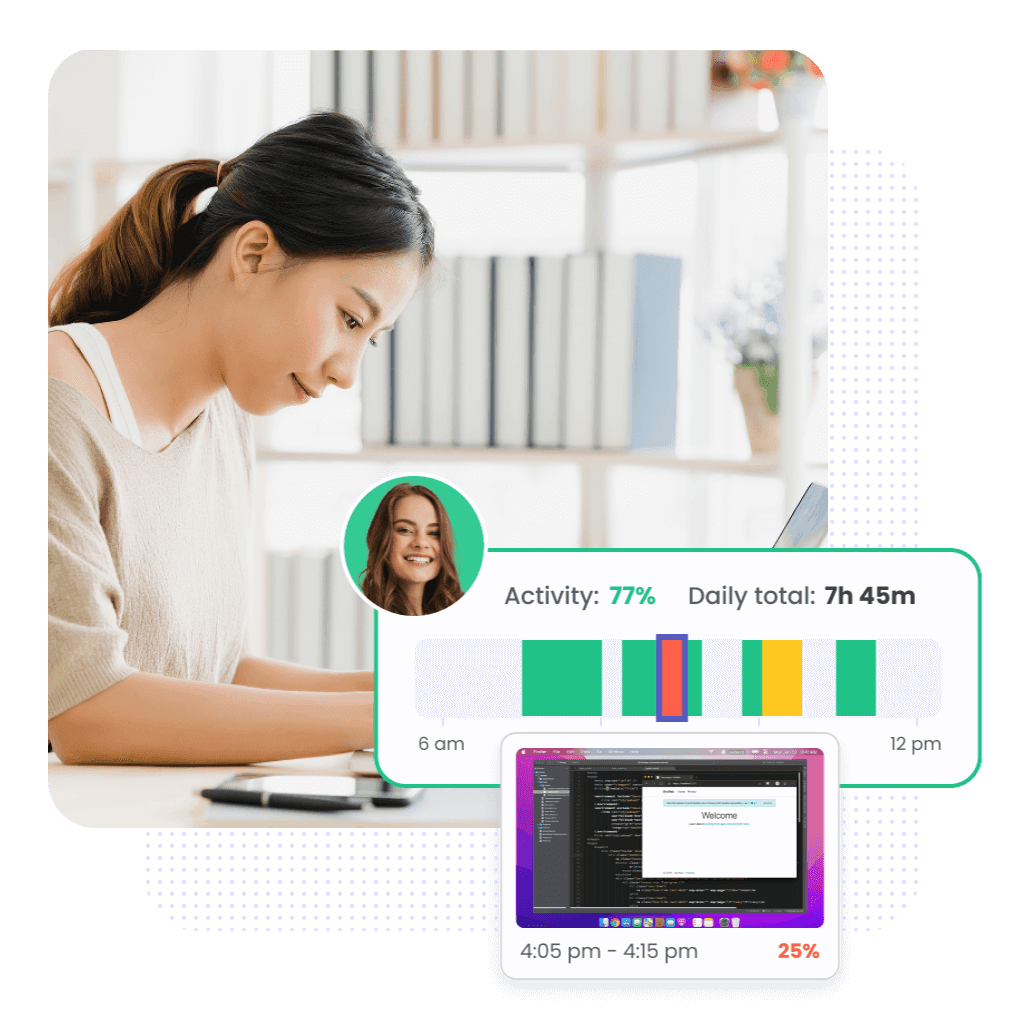
Screen Monitoring Benefits for Your Business
As teams around the world embrace flexibility in their work environments, tools that help them stay connected and efficient are in high demand. In this context, screen monitoring software becomes an invaluable tool and business helper that keeps an eye on employees’ computer activity, ensuring overall efficiency.
Screen monitoring captures what's happening on a screen, giving businesses a visual understanding of how efficient work processes are. Besides, it helps employees to stay on track, finish tasks faster, and even save some money in the process.
With the help of screen monitoring, businesses can now easily work with people from all over the world.
A business, equipped with screen monitoring software, can find the best talents anywhere while at the same time saving on office space and avoiding the risks or costs associated with lost productivity.
The advantage of screen monitoring software is not limited to business alone. A system in place that helps employees to focus better, benefits their work-life balance as well. It creates a win-win situation: work gets efficient, and there's a clearer line between work time and personal time, making for happier, more balanced lives.

Performance Metrics
Screen monitoring software provides an outlook into the performance of departments and teams. It can easily indicate areas that are succeeding and those that could use a little boost. With this clarity, businesses can strategize addressing weak spots and maximizing strengths.
Resource Allocation
The software gives a transparent view of how employees allocate their time. By observing which tasks or projects are time-intensive, businesses can make informed decisions about budgeting and staffing. This ensures that growing areas get the resources they need, while others can be optimized for efficiency.
Client Interactions
Every time an employee communicates with a client, screen monitoring captures the essence of the interaction. This offers insights into which products or services are gaining traction, common challenges clients face, and potential areas for improvement or innovation.
Trend Analysis
Over time, patterns in work habits and client interactions become evident. Whether it's a recurrent productivity pattern or fluctuating client queries, recognizing these trends helps businesses adapt and refine their strategies, ensuring they're always a step ahead in the game.
Large Workforce Management
Screen monitoring software offers a clear picture of how employees navigate their daily tasks. By understanding which teams or departments are consistently active, managers can streamline oversight and coordination. This ensures a cohesive approach, where everyone is attuned to the company's goals and standards.
Security Enhancement
The digital realm is fraught with potential risks, and screen monitoring acts as a vigilant sentinel. By tracking on-screen activities and patterns, the software promptly identifies any anomalies. This proactive approach means internal threats are spotted early on and suspicious activities, which could lead to data breaches, are flagged immediately.
Employee Productivity Boost
Screen monitoring provides a clear picture of how each work hour is spent. This clarity allows employees to spot their anti-productive habits and recalibrate their schedules for optimal efficiency. Moreover, with such tangible data at hand, managers can provide valuable feedback, steering employees towards better performance and greater achievements.
Detailed Reporting and Analysis
Screen monitoring tools provide valuable data for in-depth reports and analytics. Whether it's looking into certain metrics or time periods, or gaining an overview of workflow dynamics, this function equips managers with the knowledge to spot productivity peaks, recognize bottlenecks, and decide where additional training or resources might be beneficial.
Minimizing Performance Disruptions
By analyzing data collected by means of screen monitoring, a company can identify the bumps that hinder overall company performance. Be it technical glitches that need IT support or spotting if an employee's schedule is overflowing with tasks. This proactive approach ensures a better overall performance. As a bonus – it helps to reduce the chances of burnout.
Issues Should You Be Aware of While Using the Software
Breach of Privacy and Personal Data
With screen monitoring, the balance between productive monitoring and personal privacy is delicate. Utilizing desktop monitoring software provides employers with access to the digital activities of their employees. However, this window might sometimes offer glimpses into private lives.
It is crucial for companies to enable screen monitoring in the least invasive way possible. How? The golden rule here is transparency. Before rolling out any screen monitoring tool, employees should be brought into the picture - understanding what's monitored, why it's done, and how their data is safeguarded. Such open dialogues can help in building trust and ensuring that the software is used ethically and responsibly.
Impact on Morale and Trust
Screen monitoring, if not handled carefully, can cast a shadow on the trust employers share with their employees. The very idea of their screens being watched might make employees feel like they're under a perpetual microscope, leading to discomfort and anxiety. This can unintentionally breach trust and morale, impacting the very productivity the software is intended to boost.
It's crucial for employers to ensure that the software focuses solely on work-related activities and steers clear of personal domains. Drawing a clear line between professional oversight and personal privacy, coupled with open channels for feedback and concerns, can ensure that screen monitoring serves its purpose without compromising the trust and well-being of the workforce.
Legal Implications of Breaching Privacy and Personal Data
Beyond the ethical dimensions of employee monitoring, there are tangible legal implications to consider.
Recently, many countries have strengthened data protection laws, which dictate how personal data should be collected, stored, and used. A perceived invasion of privacy can lead to employees taking legal action against their employers. Lawsuits can be financially draining, damaging to a company's reputation, and time-consuming.
The best approach here is to be proactive: be open with employees about monitoring practices and ensure full compliance with data protection laws. By prioritizing transparency and respecting boundaries, employers can stay away from potential legal pitfalls while fostering a positive work environment.
How to Conduct Ethical Screen Monitoring
The practice of screen monitoring has become a valuable tool for many organizations, that helps to optimize productivity and protect the company’s devices. However, the adoption of such software also means learning how to use it ethically. As more and more companies adopt screen monitoring software, there are key principles they can follow to ensure that the process is both ethical and effective. Here are some pivotal strategies to conduct responsible and considerate screen monitoring:
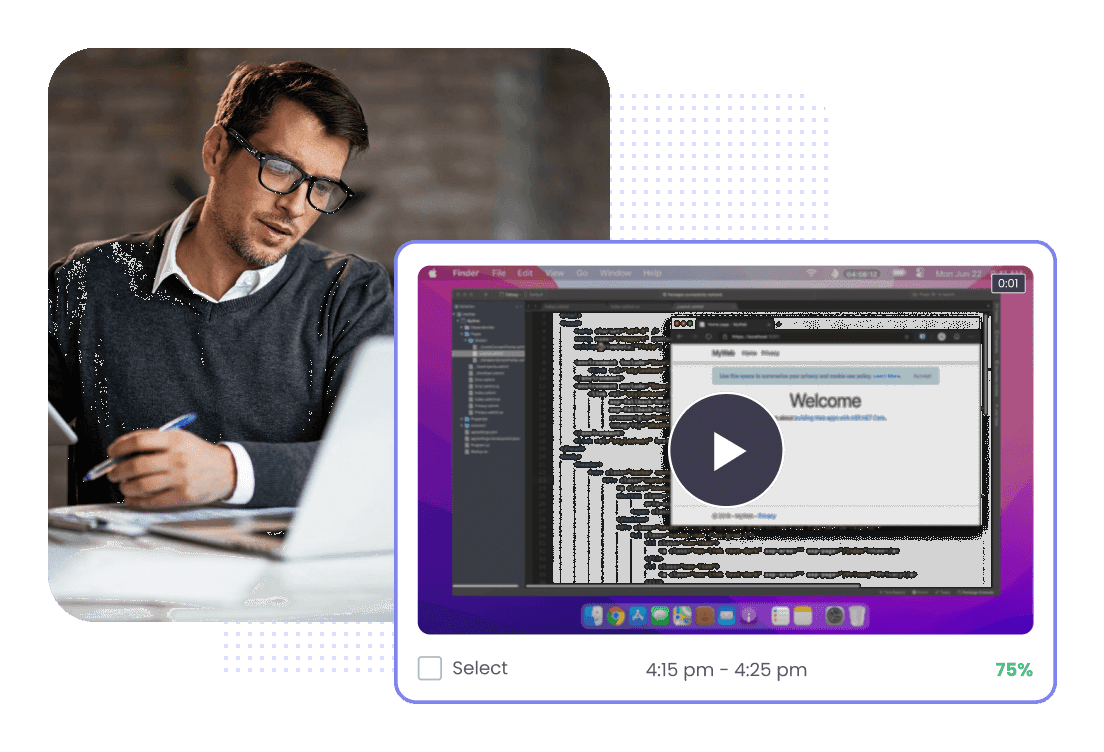
Create a Standard Employee Monitoring Policy
Every organization should have a well-defined and transparent monitoring policy in place. This policy should clearly outline the why, what, and how of monitoring. It should detail which activities are monitored, how the data is stored, who has access to it, and for what purposes it can be used.
By clearly defining boundaries and ensuring that the policy is communicated to all employees, companies can prevent misunderstandings and foster a culture of trust and openness.
Adhere to Country and State Laws
Different countries and even states within countries have varied regulations concerning employee monitoring and data privacy. It's crucial for organizations to be aware of these laws to avoid legal repercussions. Regular reviews and updates of monitoring practices in line with evolving laws can prevent potential legal implications.
Help Employees Understand the Need for Monitoring
Rather than imposing monitoring software, employers should take the time to explain the rationale behind such decisions. Whether it's to ensure data security, improve productivity, or maintain operational integrity, helping employees understand the bigger picture can alleviate concerns.
Regular workshops, training sessions, and open forums can be platforms where employees voice their concerns, ask questions, and gain clarity on the subject.
Set up a range for monitoring
One of the primary concerns employees often express about screen monitoring is the feeling of constant surveillance. To address this, employers can limit the scope of monitoring to primarily business-related activities on an employee's computer.
By focusing only on work-specific tasks and applications, employers can ensure oversight without delving into personal realms, ensuring that the employee's personal space and activities remain private.
Set up a monitoring time frame
The boundary between work and personal time should be distinct. In order to do so, monitoring should be strictly confined to designated work hours.
By ensuring that there's no surveillance during breaks, after hours, or on days off, employers can convey respect for their employees' personal time and activities, reinforcing the idea that the primary aim of monitoring is work-related oversight, not personal intrusion.
Encourage Transparency and Open Communication
Openness is the foundation of trust. Employers should clearly explain the objectives for installing screen monitor app and the benefits it brings to both the organization and its employees.
By explaining how the software operates, what data it captures, and the safeguards in place to protect privacy, employers can avoid many concerns. Furthermore, fostering a culture where employees feel free to voice their opinions, share their concerns, and discuss their preferences can lead to a more understanding and collaborative approach to monitoring.
Use a Secure Screen Monitoring Tool
The tool itself plays a significant role in addressing security concerns. Opt for desktop monitoring software that prioritizes data security, offers robust access controls, and complies with international data protection standards. Additionally, ensuring regular software updates and patches can keep potential security threats at bay.
Choosing the Right Desktop Monitoring Software
With a multitude of options for screen monitoring provided by contemporary employee monitoring software, selecting the perfect fit for your organization can be a real challenge. The better you can align the software functionality with your company's objectives, culture, and operational needs, the more benefits you get in the long run. Here we discuss the key considerations for making an informed decision while choosing screen monitoring software, without compromising on employee trust or privacy.
Determine Your Goals
Before diving into the features and specifications, it's crucial to outline what you plan to achieve with the software. Is it purely for productivity assessment, data security, or perhaps a blend of both? Primary objectives of a cybersecurity firm might be detecting and responding to threats, whereas a marketing agency might prioritize analytics and campaign optimization. Defining those goals is crucial for choosing screen monitoring software with functionality that your particular business requires.
Functionality Matters
Every business is unique, and so are its needs. The industry you operate in, the nature of tasks your teams handle, and your company's structure will influence the functionality you require. For instance, a design firm might prioritize screen recording capabilities, while a financial institution will rather focus on data protection features. Take the time to map out your specific requirements.
Mind the Budget
Pricing matters. Consider the number of licenses you'll initially need, and which features are a must-have for you. Similarly, if you are a small startup you might need a cost effective software with most essential features, like monitoring the apps and employee attendance, while a large corporation may be willing to invest in more advanced functionalities. Also think long-term: as your business grows, will the software scale with you? Opting for a scalable solution now can save future transition costs and operational hiccups.
Market Research is Key
Dive deep into available options. Look at reviews, compare features, and perhaps even test out a few different options. Gathering comprehensive information will ensure you're making an informed decision. If you found screen monitoring software that seems to hit all the spots for your company, but 60% reviews complain about it being not user friendly - keep that in mind, especially if not all of your employees are tech-savvy.
Customer Service and Tech Support
The best software is only as good as the support behind it. Issues and queries are inevitable, so having a responsive and knowledgeable tech support team is invaluable. Some businesses, like e-commerce platforms, require round-the-clock support, but if you operate strictly from 10 AM till 5 PM - 24/7 customer support is not your priority. Moreover, consider how they handle updates and patches, ensuring that the software remains up-to-date and secure.
Prioritize User Experience
An intuitive, user-friendly interface can significantly reduce the learning curve and foster a smoother integration into daily operations. If your team finds the software illogical and confusing, it can hinder its effectiveness. Always go for a solution that's easy to navigate.
Frequently Asked Questions
Does Screen Monitoring Improve Productivity?
Screen monitoring can notably enhance productivity. By capturing employees' work habits, it allows managers to identify inefficiencies, ensuring tasks are accomplished on time. The awareness of being monitored can also nudge employees to remain more focused on their tasks.
Is Employee Screen Monitoring Legal and Compliant with Privacy Regulations?
The legality of screen monitoring is a nuanced subject, varying across jurisdictions. Generally, it's permissible if employees are informed and the monitoring respects privacy boundaries. Companies must be diligent about regional privacy laws and ensure they obtain the necessary consents before implementation.
Can Employee Screen Monitoring Software Be Customized to Specific Company Policies and Needs?
Absolutely! Most screen monitoring software is designed with flexibility in mind. This allows businesses to adjust monitoring criteria, access controls, and even software integrations to better align with their unique policies and operational needs.
What Data or Insights Can I Gather from Employee Screen Tracking? How Can This Information Be Used to Make Informed Decisions?
Through employee screen monitoring, businesses can access a lot of diverse information, ranging from the specifics like which applications are most used, the websites frequently visited to broader insights like overall work patterns and task completion metrics. Additionally, it can offer a look into periods of high activity versus idle times.
This data can guide managers in resource allocation, pinpoint areas that need improvement, and refine existing processes. It also provides a foundation for recognizing high performers and ensuring work is distributed evenly, thus preventing burnout and maintaining team morale.
What Are Some Best Practices for Implementing and Managing Screen Monitoring in a Business?
When introducing screen monitoring to a business environment, several best practices can ensure a smooth transition. Firstly, open communication is crucial; employees should understand why monitoring is being implemented and how it will be used.
Transparency is key – employees should know what is being monitored and have access to their data. Furthermore, it's essential to stay updated with privacy regulations to ensure compliance. Periodic reviews of the monitoring policy, taking into account feedback from the team, can help make sure the system remains effective and fair.
What Is the Role of Employee Consent in Implementing Monitoring Software?
Securing employee consent when deciding for screen monitoring software is a cornerstone of ethical monitoring. When employees give their consent, they acknowledge and understand the extent of monitoring, which fosters a sense of trust and transparency between them and the management. Beyond the ethical dimension, in many places around the world, obtaining clear, informed consent is legally mandated.
How Can Employee Monitoring Help Prevent Insider Threats and Data Breaches?
By continuously capturing and analyzing an employee's activities, the software can swiftly identify actions that deviate from standard behavior. For instance, if an employee suddenly starts downloading large volumes of sensitive data or accessing areas they typically don't, these actions can raise immediate flags. The real-time nature of screen monitoring ensures that such unusual activities are detected promptly, allowing companies to take quick preventive measures.
What Are the Costs Associated with Implementing Employee Monitoring Systems?
The costs of implementing employee monitoring systems can vary widely based on several factors. Firstly, there's the direct cost of the software itself, which can differ based on the vendor, features offered, and the number of licenses required. At a later stage companies might also need to consider costs related to software maintenance and updates, as well as personnel training.
Are There Any Industry-Specific Regulations or Guidelines for Desktop Monitoring?
Yes, industry-specific regulations for employee monitoring do exist, particularly in sectors handling sensitive data such as finance, healthcare, and law. For instance, in the financial sector, there might be stringent guidelines on monitoring to prevent insider trading. Companies must familiarize themselves with the regulations governing their specific industry and ensure that their monitoring practices are compliant.
How Can Employers Ensure Transparency and Communication About Employee Monitoring Policies?
Employers can foster transparency by openly discussing the reasons for implementing monitoring software, detailing what will be monitored, and clarifying how the collected data will be used. Regular communication sessions, Q&A rounds, and accessible documentation about the monitoring policy can further ensure that all employees are informed.
What Tools or Metrics Are Effective for Measuring Employee Productivity Beyond Screen Monitoring?
Several tools and metrics can offer insights into employee productivity. Time-tracking tools can measure time spent on tasks, while project management software can provide insights into task completion rates. Feedback from peers and managers through regular performance reviews can offer qualitative insights into an employee's contributions and areas that may need improvement.
How Can Employee Monitoring Support Employee Development and Training Initiatives?
Employee monitoring can highlight areas where employees might be struggling or spending excessive time. By analyzing this data, employers can identify skill gaps or areas where further training is required. Monitoring can also reveal high-performing employees, making them potential candidates for advanced training or leadership programs. In essence, the insights from monitoring can be a foundation for tailored training and development programs, ensuring employees have the skills they need to excel.
Get a competitor discount
If you use another time tracker or employee monitoring
software,
you can get Traqq
at up to 30% off.
off